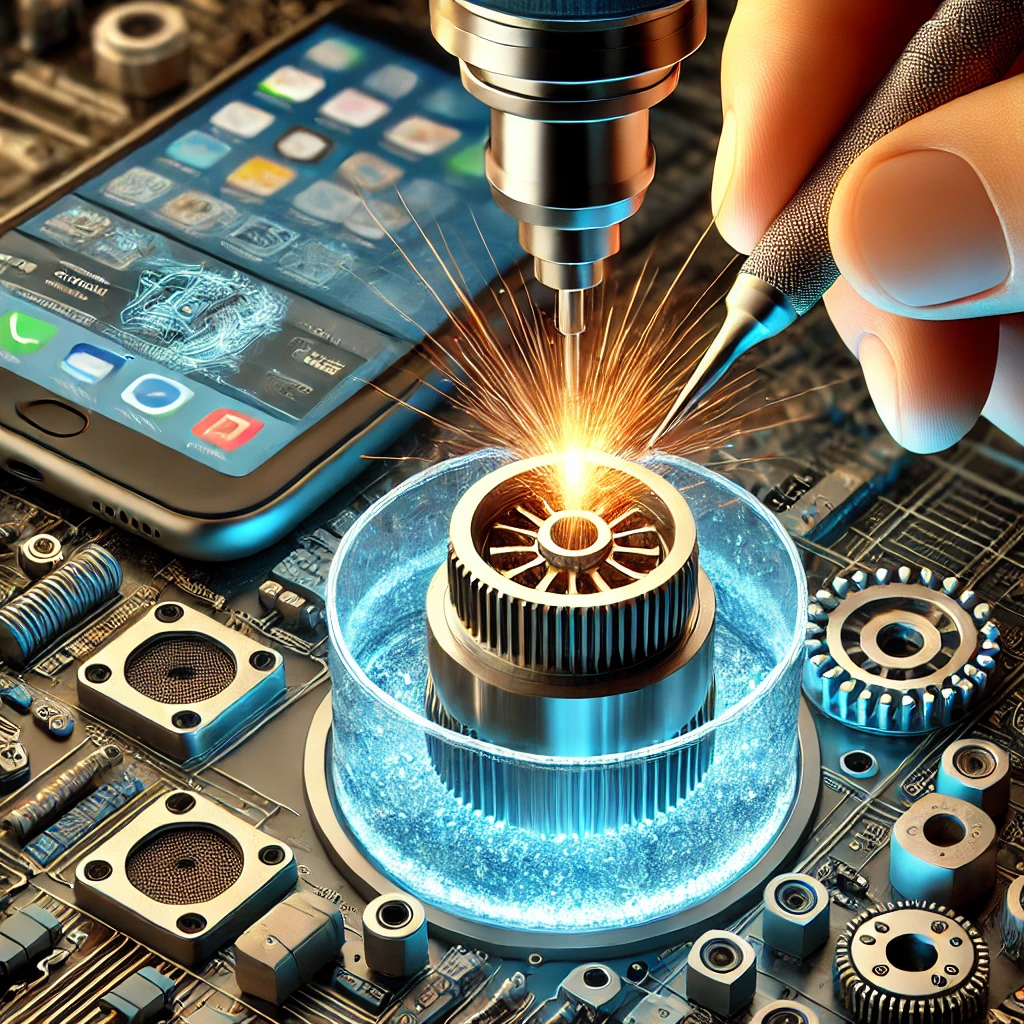As things get smaller in the modern world, so do parts, and this article will discuss electrical discharge machining among the various machining methods used to manufacture them, including its advantages and limitations and how they can be overcome.
In the modern world we live in, many objects are becoming smaller than in the past. Smartphones, laptops, and tablet PCs are some of the most common examples. This reduction in the size of the objects themselves means that the components that make them up are also getting smaller. But how are these tiny parts made?
The manufacturing process varies depending on the part, but the most basic process is probably cutting into the desired shape. However, as technology has become more advanced, micrometer and nanometer-scale cuts have become necessary, and direct contact machining, which has been practiced in the past, has many limitations. Because they are so small, they often break at the slightest force, and they are often smaller than the tool that cuts them.
Therefore, various machining methods have been developed under the name of ‘micromachining’, and among them, we will explain ‘electrical discharge machining’. Electrical discharge machining has many advantages over other machining methods, such as high geometric precision and high machining speeds. So, let’s take a closer look at electrical discharge machining.
Electrical discharge machining, also known as spark machining, is a method of machining with sparks, which are generated when the positive and negative poles of electricity collide. The heat energy from the spark melts or vaporizes the material to be machined, removing it and giving it the desired shape. Compared to other processing methods such as laser beam processing and chemical etching, electrical discharge processing has various characteristics, first of all, it can easily process even very hard materials with the high energy of electrical discharge.

The moment an electrical discharge occurs, a tremendous amount of energy is generated, which is much shorter than other machining methods, so it is a very large amount of energy that is generated instantaneously. Also, because electrical discharge machining is a non-contact machining method, the tool does not need to apply mechanical stress to the material. Let’s understand how it works with a simple example. You have a machining tool in the shape of a long, thin cylinder. Naturally, it’s energized because it needs to be a conductor of electricity to generate a spark. When you get close to the material you’re machining, a spark is created between the tool and the material, and since the tool is cylindrical, a round hole is created in the material. This shows that the shape of the tool also determines the model that is machined. Therefore, electrical discharge machining can precisely machine complex shapes.
However, electrical discharge machining does have its limitations. This is tool wear. Tool wear occurs because the discharge circuit makes the tool negative and the material positive, and the positive ions formed when the electrons emitted from the cathode collide with the material collide with the tool. This collision causes the tool to wear down slightly, and this tool wear causes the shape and amount of cut to change slightly.
In addition, the limited number of sparks per unit of time causes the surface to become bumpy; the more sparks, the smoother the surface, but the limited number of sparks prevents the surface from being smooth. Various approaches have been taken to address this limitation. One approach is to mix metal powders into the insulating fluid. In electrical discharge machining, there is an insulating fluid between the tool and the material that keeps the heat cool and prevents sparks from forming. When metal powder is mixed into this insulating fluid, current flows through the powder, which was initially non-current, and the powder itself becomes polarized, either positive or negative. The polarized powder will spark even if the gap between the tool and the material is slightly wider, and the number of sparks will increase because it helps the current flow well. Therefore, mixing metal powder in the insulating liquid helps the surface of the material to be machined smoothly, and the energy is distributed by generating multiple sparks, which reduces tool wear.
Despite these technical limitations, electrical discharge machining has been recognized for its potential in a wide range of applications. In particular, it is increasingly being used in sectors that require high precision, such as medical devices, electronics, and the aerospace industry. These are areas where the advantages of electrical discharge machining are maximized, where precise machining of small parts is essential. For example, microscopic parts in medical devices can be made with high precision using electrical discharge machining, increasing patient safety and device efficiency at the same time.
Additionally, research in electrical discharge machining is constantly evolving, and new technologies and methodologies continue to emerge. For example, electrical discharge machining combined with nanotechnology has recently gained traction. This technology, which enables nanometer-scale precision machining, is overcoming existing limitations and paving the way for more precise and complex parts. More than just a manufacturing process, electrical discharge machining is becoming an important pillar of technological advancement.
As more and more things are getting smaller and smaller, we’ve taken a look at one of the ways to make them: electrical discharge machining. As we’ve seen, electrical discharge machining has its advantages and limitations. However, there are solutions to compensate for this, and there is still a lot of research going on, which will allow us to use electrical discharge machining more and more effectively in a wide variety of applications. While it may be difficult to maintain a constant interest in electrical discharge machining, it’s worth thinking about it from time to time as we look at the smaller and smaller objects around us.
